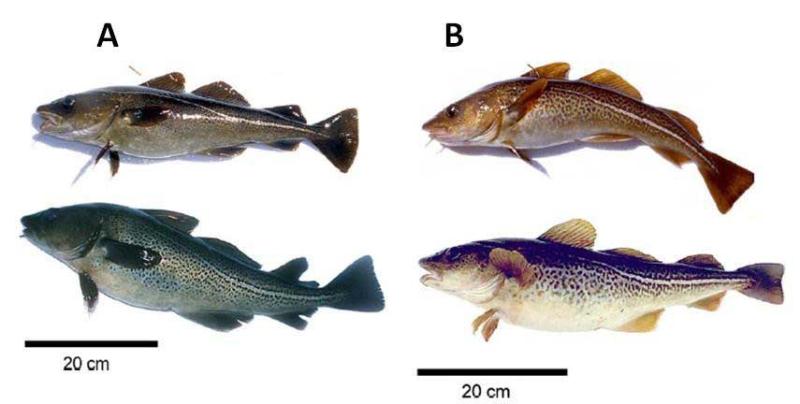Over nearly 5 years, an international group of researchers inventoried, summarized, and analyzed all relevant peer-reviewed information about Atlantic cod stock structure off New England. Their initial results were reported in 2021. The fully documented study is now available.
The researchers determined that cod found off New England occur in five distinct populations. They have further identified these as an offshore Georges Bank population and four inshore populations. They include a mixed stock composed of spring and winter spawners in the southern Gulf of Maine.
Since 2021, the Northeast Fisheries Science Center and the New England Fishery Management Council have considered both the management and stock assessment of these newly proposed biological cod stocks.
Variety of Experts Needed to Unwind Stock Components
Since 1972, the Atlantic cod in U.S. waters have been managed in two management areas: Gulf of Maine and Georges Bank. These areas were drawn around an underlying “grid” of smaller areas with roots in fishing grounds identified by U.S. and Canadian fleets through most of the fishery’s history. The framework was further formalized as fishery management and fishery science advanced and was used to structure groundfish studies and regulations.
However, both fishermen and fish biologists could see and document differences among cod throughout U.S. and Canadian waters, including:
- Genetic composition
- Spawning behavior
- Migration patterns
- Physical characteristics like shape, size, and color
The challenge was first to collect and aggregate enough reliable information for a large-scale study. Then,we brought together an interdisciplinary group of experts to analyze the information and further define more discrete populations within the larger management areas. The Atlantic Cod Stock Structure Working Group was formed in 2018 to do just that.
The group includes specialists across various fields in fisheries biology, Rich McBride, a co-chair of the working group, found that each discipline offered insight into how a species lives in the vast, open ocean. Species in the open ocean are often divided into discrete or overlapping populations. “The differences evident with each discipline are often a matter of resolution or spatial or temporal scale, but that is important,” he said. “I found the different disciplines offered complementary and not competing perspectives.”
The working group also included commercial fishermen and sought out their perspectives and input throughout this study. McBride noted the importance of this component of the study, saying “the industry was included in every step of the process.” A former commercial fisherman was a working group member. Recreational and commercial captains and their representatives also attended:
- 2018 and 2019 working group meetings
- 2020 peer review of findings
- 2021 outreach meetings
- 2022–2023 Atlantic Cod Research Track Assessment
Better Stock Structure Understanding Key to Improving Chances for Cod Recovery
The Atlantic cod stocks have declined significantly since the 1990s. Despite efforts to reduce fishery catch and support the species’ ability to thrive, these stocks have not had much success in rebuilding. There are many pieces to the puzzle of understanding and improving the condition of cod stocks. Experts hope that improved recognition of population structure may help.
These findings are currently being taken into account in the U.S. Atlantic cod research track stock assessment, scheduled for July 31 to August 3, 2023.
“The assessment is currently moving from the old two-stock structure to a new stock structure that will better match our new understanding of the biological stocks,” said Charles Perretti, a NOAA Fisheries stock assessment scientist and one of the leads for this assessment. “This work is ongoing and is scheduled for peer review this year. After that, fishery managers will decide how to incorporate the new stock structure into management.”
The work is ongoing, but with persistence, stock assessment scientists and fishery managers hope this work will help:
- Prevent further loss of Atlantic cod spawning components
- Better guide adjustments of allowable catch to balance fishing mortality across populations
- Facilitate recovery of currently declined stocks
- Strengthen the resiliency of the populations that exist within fishing areas.
McBride continues to look ahead for additional ways to apply these studies, remarking, “New methods and funding are needed to sort out the data for two separate stocks in the mixed area, as well as to improve the data quantity in the data poor areas, but these issues have been clearly identified for the future.”


